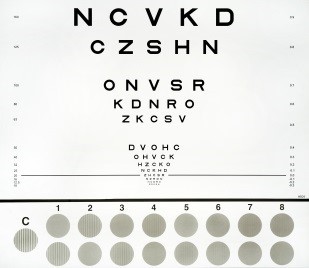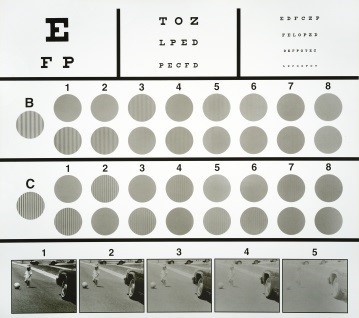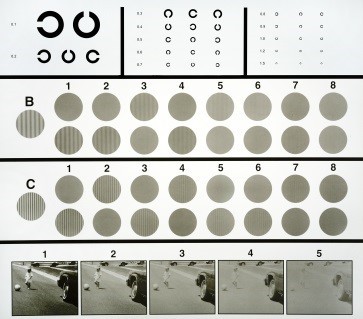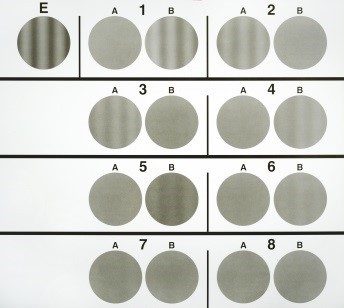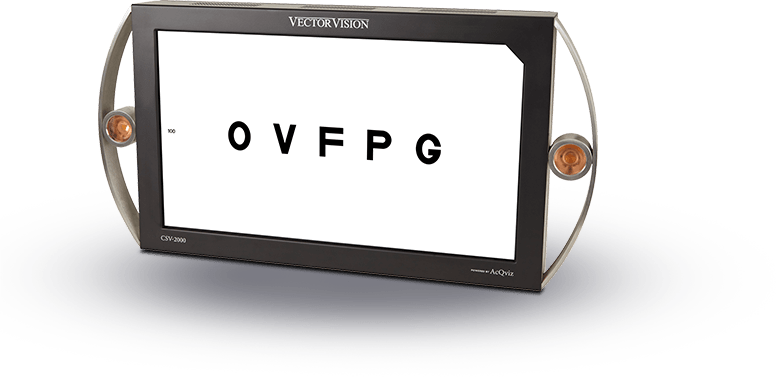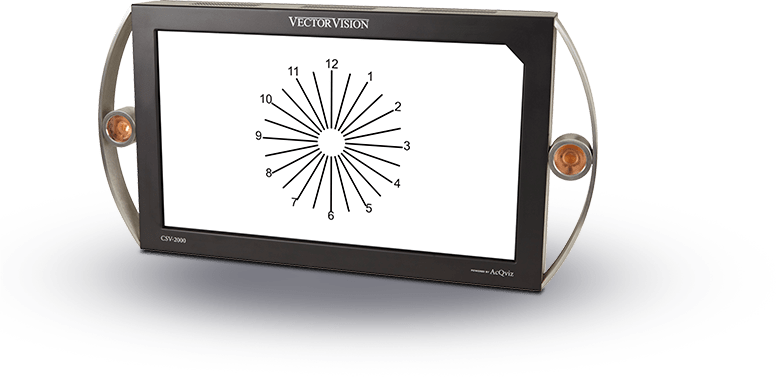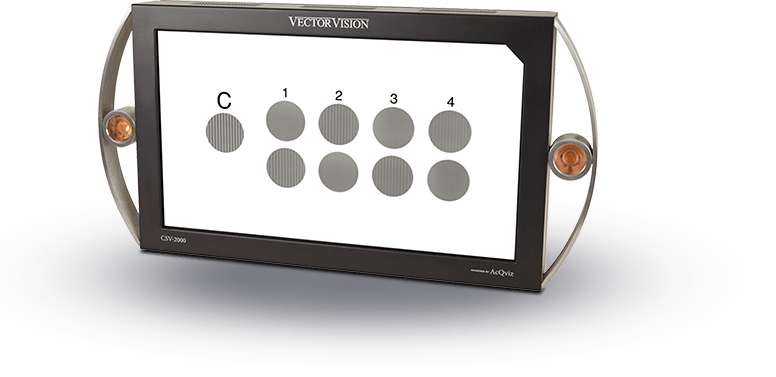Standardized Contrast Sensitivity Tests
Contrast sensitivity testing is accomplished worldwide by eye doctors in more than 60 countries using the CSV-1000 instrument. The ease of use, standardization and accuracy make it a mainstay for measuring the functional vision for cataract patients, evaluating refractive surgery and IOLs and for assessing disease progression and treatment. Please review the images and text below to learn about the various contrast sensitivity test faces that can be used with the CSV-1000. (Please visit this page for background information describing the basics of contrast sensitivity.)
CSV-1000E
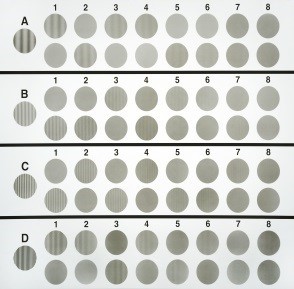
For those interested in using the CSV-1000E in research studies, the test face is available in two versions. The CSV-1000E Contrast Sensitivity Chart 1 provides randomized locations for the grating targets.
CSV-1000RS
The CSV-1000RS test face is used widely for screening refractive surgery patients. The test presents ETDRS LogMAR acuity from 20/10 to 20/100 and one row of spatial frequency at 12 cycles/degree.
The patient can be easily screened in the examination chair for ETDRS acuity and contrast sensitivity. If a contrast sensitivity deficit is found, retesting the patient with all four spatial frequencies using the CSV-1000E is recommended.
CSV-1000S
The CSV-1000S test face is widely used for in or out-of-office screenings and for cataract evaluation. This test presents standard visual acuity from 20/15 to 20/200, two rows of spatial frequencies (6 and 12 cycles/degree) and a real-world driver’s scene.
The test is very useful for cataract documentation as it provides a standard acuity score, a functional acuity score and a real-world simulation. The real-world scene is an excellent education tool to demonstrate the functional cataract vision loss to both the patients and the family member of patients before cataract surgery.
CSV-1000SLanC
The CSV-l000SLanC test face provides the same tests as the standard CSV-1000S, except that the acuity test is presented in Landolt C format.
This test is very useful when testing patients who cannot read the English alphabet.
CSV-1000-1.5CPD
The CSV-1000-1.5CPD is a special test face designed specifically for Food and Drug Administration clinical trials which require the testing of contrast sensitivity at 1.5 cycles/degree under mesopic lighting conditions. The test is also very useful for assessing patients with low vision who require a large angle target for accurate testing.
At the recommended test distance of 8 feet, the gratings test one spatial frequency of 1.5 cycles/degree.
Featured Product
CSV-2000
CSV-2000 The first and only all-in-one digital vision testing device that offers the full range of vision tests, along with STANDARDIZED contrast sensitivity, glare and visual acuity.
Over the last 20 years, VectorVision testing equipment has become the worldwide benchmark for standardized contrast sensitivity, glare and ETDRS acuity testing.
Read our Reviews

